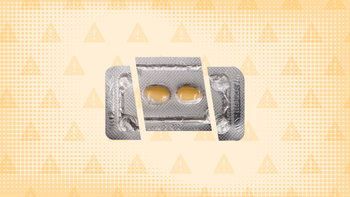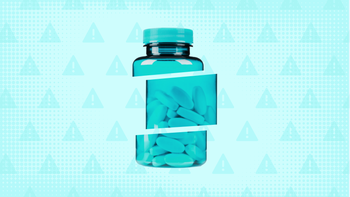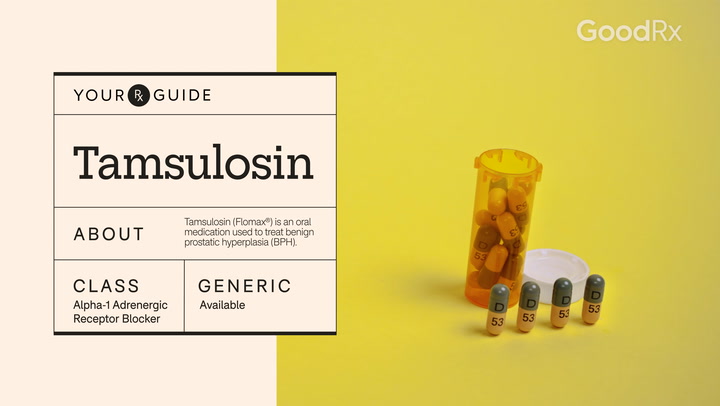
Benign Prostatic Hyperplasia (BPH) Causes, Symptoms, and Treatment
Key takeaways:
Benign prostatic hyperplasia (BPH) is a common prostate problem that affects most men as they get older.
It can lead to prostate enlargement and urinary symptoms.
BPH by itself is not a serious condition and doesn’t cause prostate cancer.

Benign prostatic hyperplasia (BPH) happens when the tissue that makes up the prostate gland changes. It’s very common, and most men will develop BPH as they get older. It can start as early as age 40, and 80% of men at age 80 will have BPH.
The good news is BPH is not a serious condition — you might not even know you have it. It doesn’t always cause symptoms, but it may lead to urinary symptoms that interfere with quality of life. That’s because the prostate sits between the bladder and the penis. Read on to find out more about what causes BPH, its symptoms, and how to treat it.
What causes benign prostatic hyperplasia?
The exact cause of BPH is unknown. It happens when cells in an area of the prostate called the transition zone increase in number. This causes prostate tissue to grow and large prostate nodules to form.
Save over 40% on Qsymia with GoodRx
Discover the once daily Qsymia for weight management. Qsymia is for adults and children 12-17 in combination with a healthy diet and regular exercise.

BPH can, but does not always, cause the prostate to get bigger. An enlarged prostate can block normal urine flow through the urethra (a small tube that carries urine from the bladder out of the body). This happens because the urethra travels through the prostate. When an enlarged prostate gets in the way of normal urine flow, lower urinary tract symptoms (LUTS) can happen (more on this below).

Who’s most at risk of developing it?
Getting older is a risk factor for BPH — it’s more common in older men. You’re also more likely to have symptoms from it as you age, and they may become more severe over time.
Research shows that genetics plays a role in BPH. This means it can be inherited or passed down through families. Ethnicity also plays a role. According to one study, the risk of BPH in Black men and Hispanic men is 41% higher compared to white men.
Other medical conditions like obesity, diabetes, heart disease, and high blood pressure can increase the risk of BPH. Some of the medications used to treat these conditions may also make BPH symptoms worse.
What are lower urinary tract symptoms?
It’s important to know that not all men with BPH will develop an enlarged prostate, and not all men with prostate enlargement will have symptoms. But when men do have symptoms, they can be difficult to live with and decrease quality of life. Common symptoms seen with BPH include:
More frequent urination
More urgent urination
Getting up at night to urinate
Incontinence
Slow or weak urinary stream
Straining to urinate
Starting and stopping of the urinary stream
Dribbling at the end of urination
Difficulty completely emptying the bladder
BPH symptoms aren’t the same in everyone. They can vary in severity and may worsen over time. In some cases they can go away on their own, although this is less common.
How serious is benign prostatic hyperplasia?
BPH itself is not a serious condition. But sometimes the prostate enlargement caused by BPH prevents urine from leaving the bladder. When the bladder can’t empty completely, it can lead to more serious symptoms, including:
Acute urinary retention: This is the inability to urinate. In men, BPH is the most common cause. Acute urinary retention can be uncomfortable. It’s usually treated by placing a catheter into the urethra to remove urine from the bladder.
Frequent urinary tract infections (UTIs): UTIs are more likely to occur when BPH causes a problem with bladder emptying.
Bladder stones: These can be of various sizes and can form in the bladder. They may cause abdominal pain, difficult or more painful urination, or blood in the urine.
Kidney injury: This can happen from chronic or acute urinary retention. You may not have any symptoms of kidney injury, but it may be found on bloodwork or urine testing. It is possible for the kidneys to recover, and the injury can be reversed once the urinary retention is treated.
Is it an early sign of prostate cancer?
BPH is not considered an early sign of prostate cancer. But BPH and prostate cancer can cause similar symptoms, and both can increase your prostate-specific antigen (PSA) level. Prostate cancer is common in men as they get older. In the U.S., about 13 out of every 100 men will get prostate cancer during their lifetime.
Researchers have done studies to see if there is a link between BPH and prostate cancer. The results have been mixed. Most research suggests that BPH does not increase the risk of prostate cancer, and a recent study actually suggests it might lower the risk. But there are studies that suggest a higher risk of prostate cancer, so more research is needed.
Although the data is mixed, having BPH doesn’t mean you will automatically get prostate cancer. If you do have urinary symptoms, discussing them with your healthcare provider can help give you peace of mind. They can help you find the cause of your symptoms and see if you need more testing or treatment.
How do you treat benign prostatic hyperplasia?
The good news is that BPH itself does not need to be treated. But if it causes prostate enlargement and urinary symptoms, treatment can help. Treatment can also improve quality of life and prevent complications like urinary retention.
Treatment for BPH includes lifestyle changes, medications, and surgery. If you have mild to moderate symptoms from BPH, you may not need treatment at first. You can monitor your symptoms over time with your healthcare provider. You may start treatment later, if your symptoms change or worsen. If you have more severe symptoms, you may benefit from medications or surgery.
Lifestyle changes are generally recommended for everyone with BPH. They’re easy to make and can improve symptoms. These include:
Avoiding drinking fluids (especially caffeine and alcohol) late in the day
Using the bathroom regularly to urinate — rather than waiting
Trying to empty your bladder completely each time you urinate
Preventing constipation
What medications are available?
There are a few different medications available to treat BPH. They come in pill form and can be taken by mouth. BPH medications include:
Alpha blockers: These medications work by relaxing the prostatic urethra (the part of the urethra that goes through the prostate). When the urethra is relaxed, it’s easier for the urine to flow through, which improves LUTS. Alpha blockers are recommended for people with moderate to severe BPH and LUTS. Examples include doxazosin (Cardura), terazosin (Hytrin), alfuzosin (Uroxatral), and tamsulosin (Flomax). Doxazosin and terazosin can also lower blood pressure, so it’s a good idea to discuss your blood pressure with your healthcare provider before starting those medications.
5-alpha reductase inhibitors: These block production of a hormone (dihydrotestosterone) that triggers prostate growth. As a result, they prevent the prostate from getting larger. Examples include finasteride (Proscar) and dutasteride (Avodart). These medications don’t improve symptoms right away and may take about 6 months to work. But they can decrease the risk of acute urinary retention and the need for surgery over time.
Phosphodiesterase-5 inhibitors: These are also used to treat erectile dysfunction. It’s not known exactly how, but they also help LUTS. Examples include tadalafil (Cialis) and sildenafil (Viagra). Unlike tadalafil, sildenafil is not FDA approved for the treatment of LUTS, so using it in this way is considered “off-label.”
What about surgery?
Surgery decreases the prostate size by removing some of the prostate tissue. This improves the flow of urine from the bladder. Surgery is usually recommended if medications fail or cause side effects. It may also be recommended if you have a complication like urinary retention or kidney injury.
There are different types of surgery available for BPH. You’ll usually be referred to a urologist — a doctor who specializes in the urinary system — to discuss what type of surgery is best for you.
What can you do to lower your chances of getting benign prostatic hyperplasia?
You can’t change your age or your genes, but following a healthy lifestyle can help lower your risk. Staying physically active, maintaining a healthy weight, controlling blood pressure, and preventing diabetes can all help decrease your risk of BPH.
The bottom line
BPH is commonly seen in men as they get older. In some cases, it may not cause any symptoms, especially early on. But it can cause prostate enlargement and difficulty with urination. The good news is BPH does not increase the risk of prostate cancer, and it can be treated with lifestyle changes, medications, or surgery to improve the symptoms.
Why trust our experts?


References
Centers for Disease Control and Prevention. (2021). Who is at risk for prostate cancer?
Grunberger, I. (2018). Innovations in treatment of BPH. Urology Care Foundation.
Hellwege, J. N., et al. (2019). Heritability and genome-wide association study of benign prostatic hyperplasia (BPH) in the eMERGE network. Scientific Reports.
Kristal, A. R., et al. (2007). Race/ethnicity, obesity, health related behaviors and the risk of symptomatic benign prostatic hyperplasia: Results from the prostate cancer prevention trial. The Journal of Urology.
Lerner, L. B., et al. (2021). Benign prostatic hyperplasia (BPH) guideline. The Journal of Urology.
Moyad, M. A., et al. (2008). Educating patients about lifestyle modifications for prostate health. The American Journal of Medicine.
Nandalur, K. R., et al. (2021). Benign prostate hyperplasia as a potential protective factor against prostate cancer: Insights from a magnetic resonance imaging study of compositional characteristics. The Prostate.
Schenk, J. M.., et al. (2011). Association of symptomatic benign prostatic hyperplasia and prostate cancer: Results from the prostate cancer prevention trial. American Journal of Epidemiology.
Urology Care Foundation. (n.d.). What is urology?
U.S. Food & Drug Administration. (2018). Understanding unapproved use of approved drugs "off label".





















